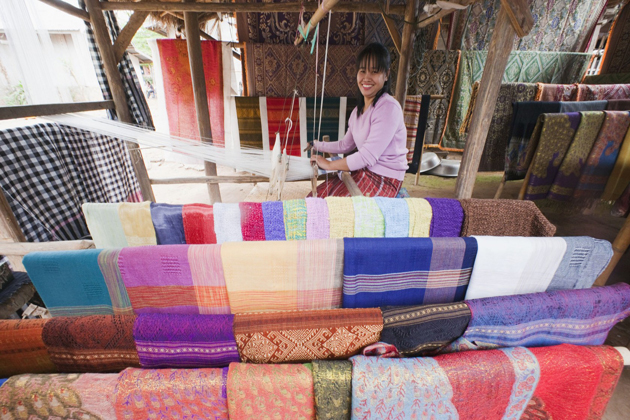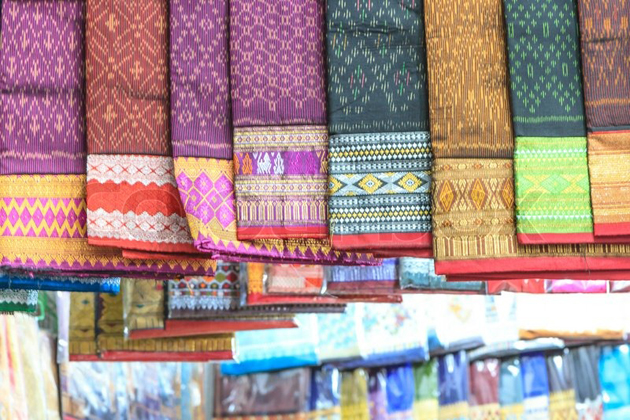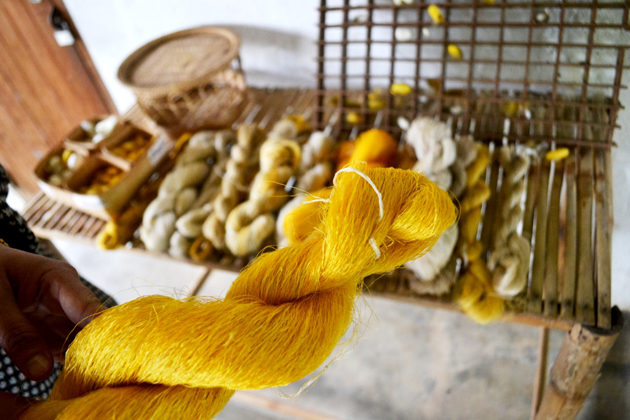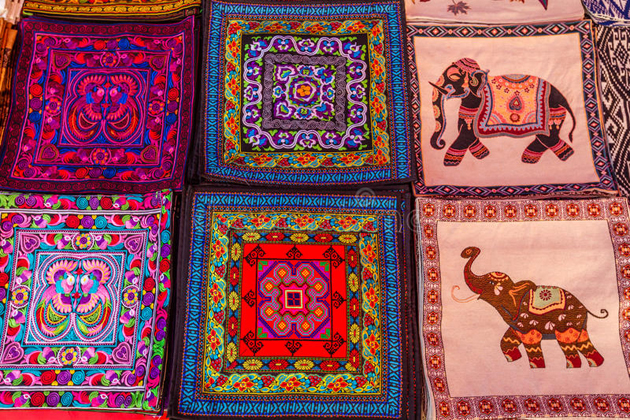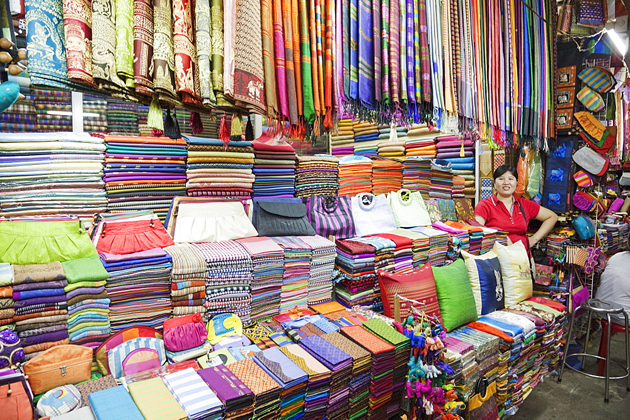During a Laos tour, one cannot ignore the allure of Laos silk, particularly the unique characteristics of wild silk. Laos silk is distinguished by its exclusively manual and craft-based manufacturing process. Unlike Indian, European, and Chinese silk, Laos silk has a rawer, more natural appearance, which lends it a noble and vibrant quality. Moreover, it is predominantly made from 100% organic materials. Exploring the world of Laos silk during your Laos tour allows you to appreciate the intricate craftsmanship and rich organic nature of this exceptional fabric.
The Completely Handmade Laos Silk
In Laos, there is still organized sericulture of small production units. Spinning by the spinning wheel, dyeing and spinning are done manually, often by women, and weaving very rarely assisted by semi-mechanical looms: most of the time, the man or the woman weaves manually 1 meter per day for the simplest motifs and only a few centimeters for the most complicated one.
The Unique Laos Silk
In this country, each family develops their own technique and sometimes their own decorative motifs, although most are reproductions of traditional motifs and ikats (fabrics with warp threads are knotted and dyed to form a drawing before being installed on the loom) specific to the ethnicity of the artisan.
Thus, each region, each family will produce a particular silk, according to its method of spinning and molding, obtaining matte or shiny silks, more or less thick and more or less soft. The region of Sam Neua, bordering Vietnam is known for its thick and extremely strong silk while we find further south in the region of Xieng Khouang, thinner, lighter, and softer silk.
The Laos Silk of Elaboration
First of all, silkworms should be fed 4 times a day, with fresh leaves of white mulberry. These small animals must eat continuously for 1 month. After that, the worms will be arranged on "hedgehog" track between which they can weave their protective cocoon for a few days.
When the worms are piercing their cocoon, they are scalded and then the silk is extracted by alkaline baths (scouring). The threads will then be boiled in pure water to obtain the expected flexibility. The more the operation is repeated the more the silk is supple; this process requires from the spinner a great knowledge of the raw materials used. It takes no less than 5000 cocoons to make 1 kilo of raw silk, during a process that takes place over 8 days. Then follow the steps of spinning, dyeing, and weaving, all these steps being performed manually. To make a long traditional stole, it often takes more than a month of work.
Different Qualities of Laos Silk
Several qualities of thread are obtained: people will extract a thread with uneven texture by using the whole cocoon (Mai sao lueai), a thread with rougher texture by using the outside of the cocoon (pueak mai) and a smooth, fine thread by using the interior of the cocoon is the royal silk (may nyot). These raw silk threads are called folds.
At this stage, important is the dexterity and the knowledge of the spinner who will have to form the final thread (the one that will be used for the actual weaving) of 1, 2, 3 or 4 folds, the first fold giving the softest, the finest, the most resistant and most lustrous silks. Depending on the pressure of the fingers when spinning, according to the technique of joining threads, the silk will come out more or less smooth.
The Importance of Laos Silk for the Locals
The first Lao silk market is certainly local. Laotians have indeed kept their traditions, and use silk pieces (shawls, scarves, skirts, stoles etc.) for traditional Buddhist ceremonies, shamanic or simply for wedding ceremonies, official meeting, etc.
Sericulture is often practiced by families to raise relatively low incomes in Laos. This requires a lot of maintenance, including feeding the silkworms about 4 times a day with fresh leaves. One kilo of silk (which, as we can see, is a complicated work) is trading at around $25 in Laos, making it possible to make affordable pieces of cloth for Laotians.

